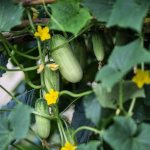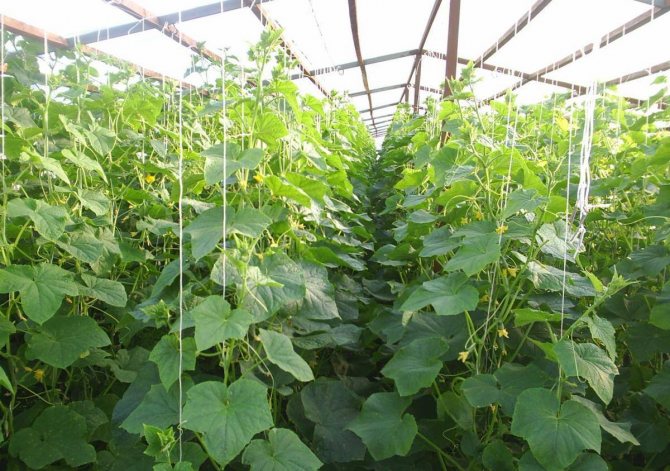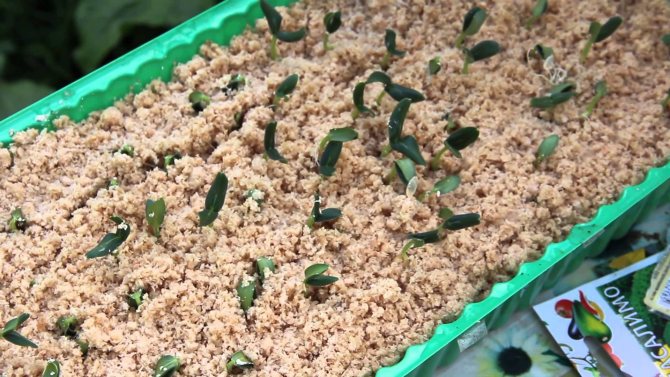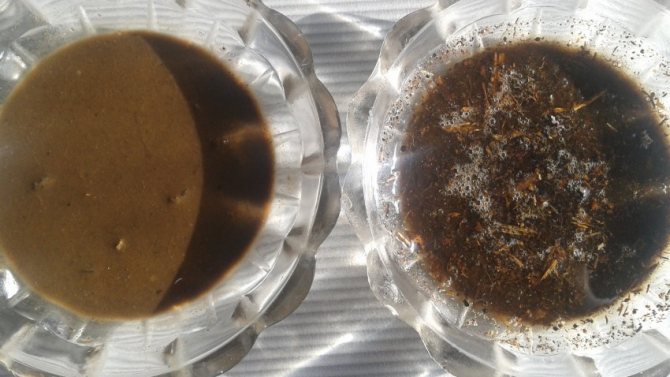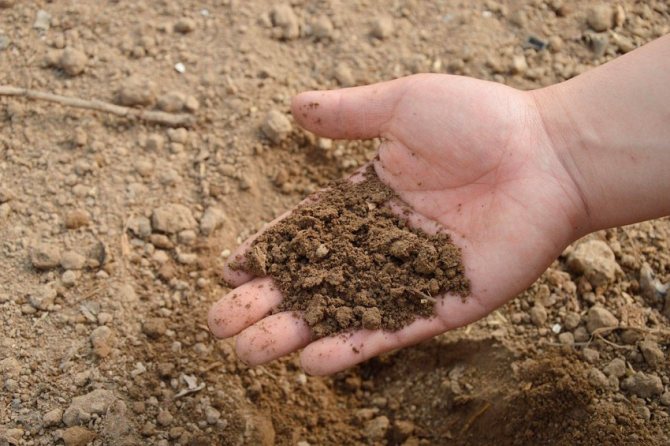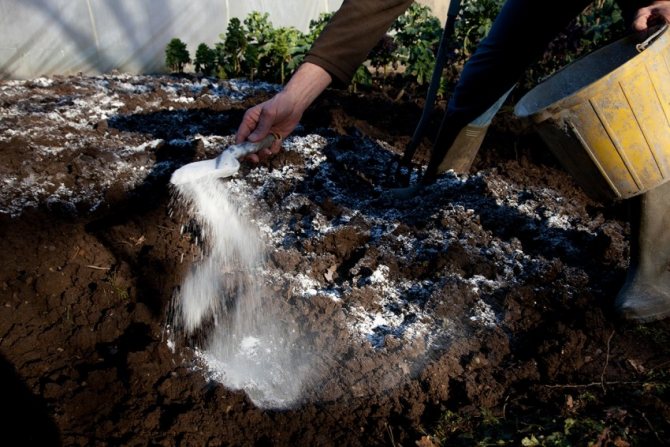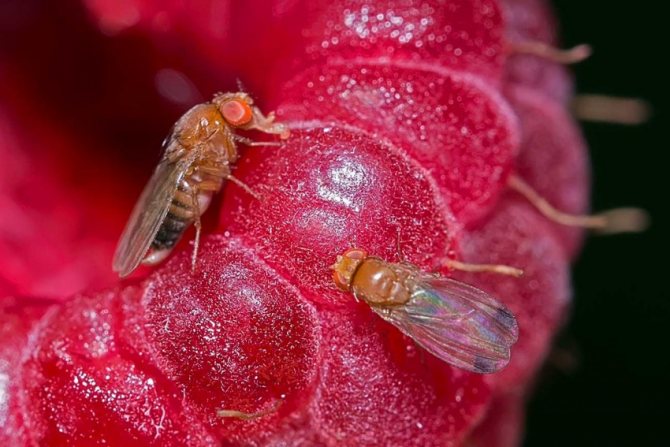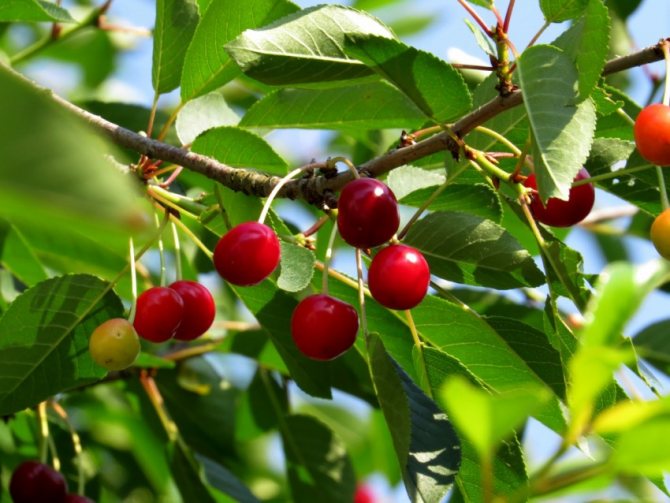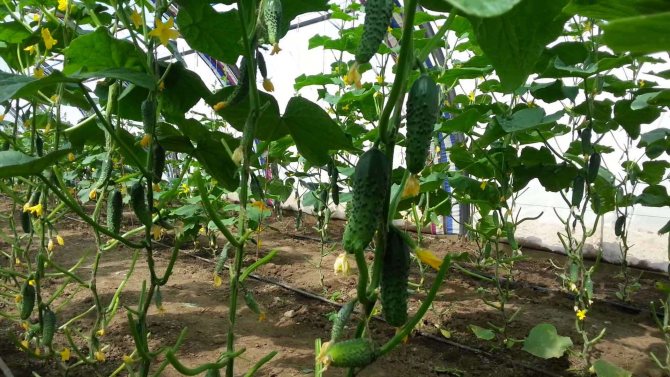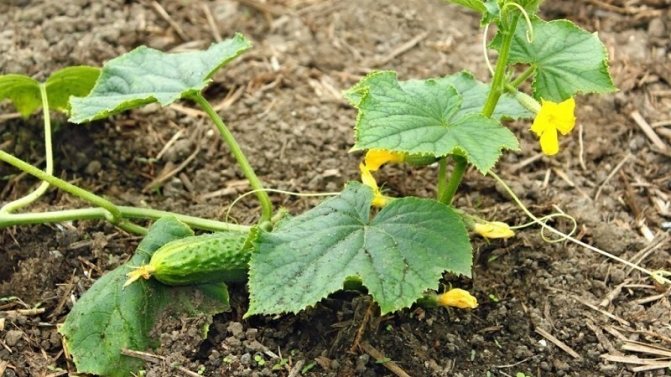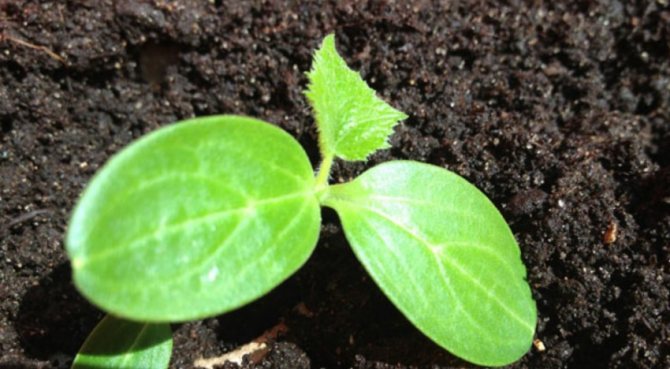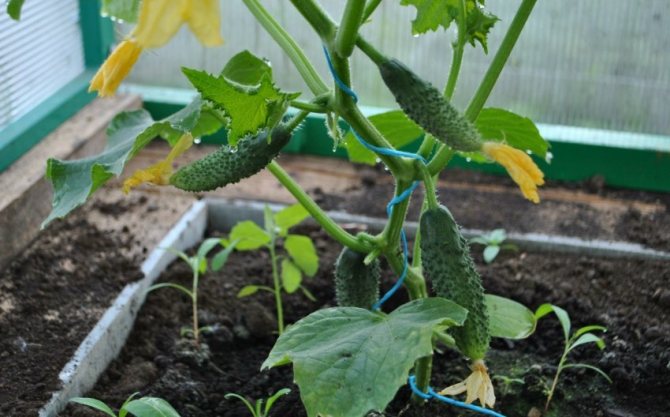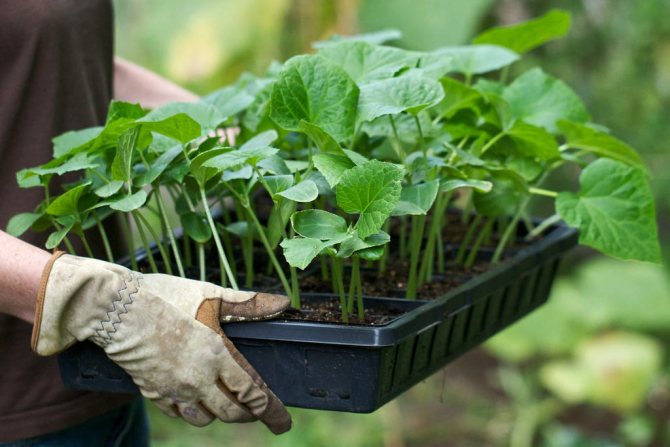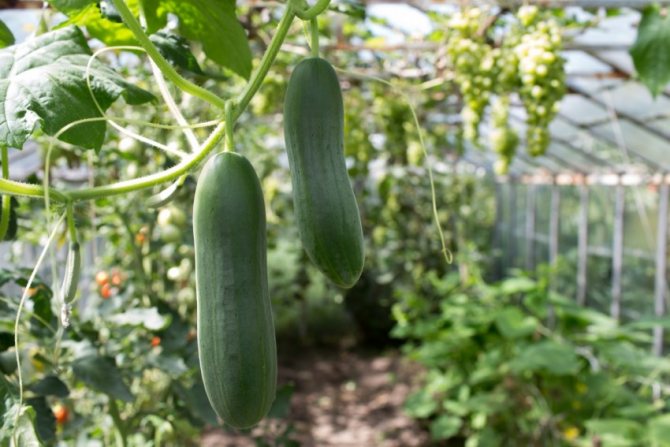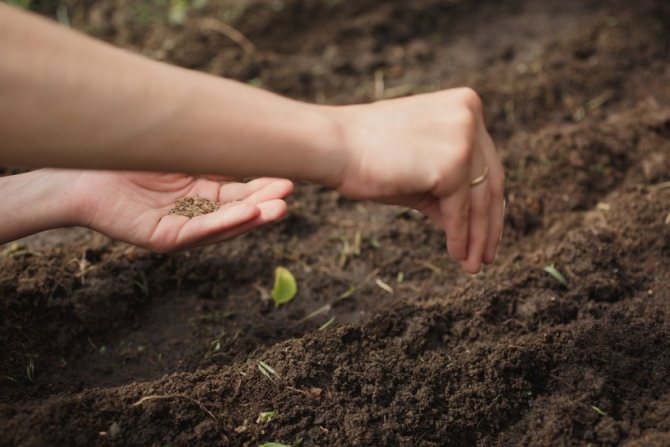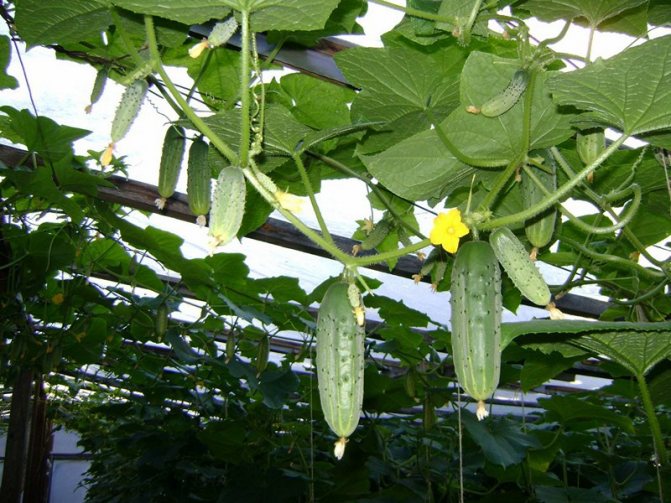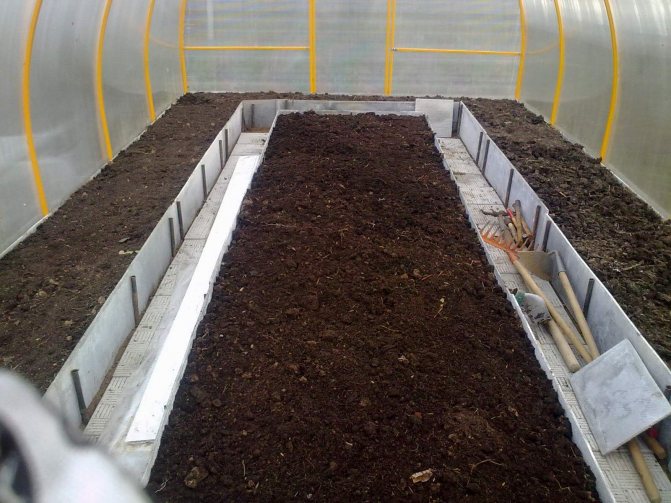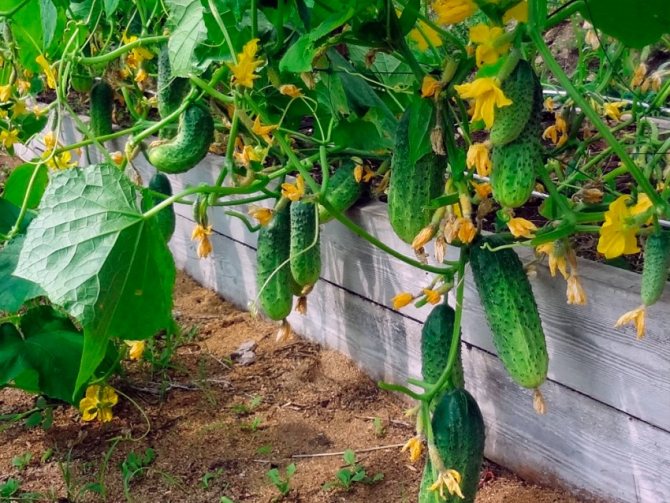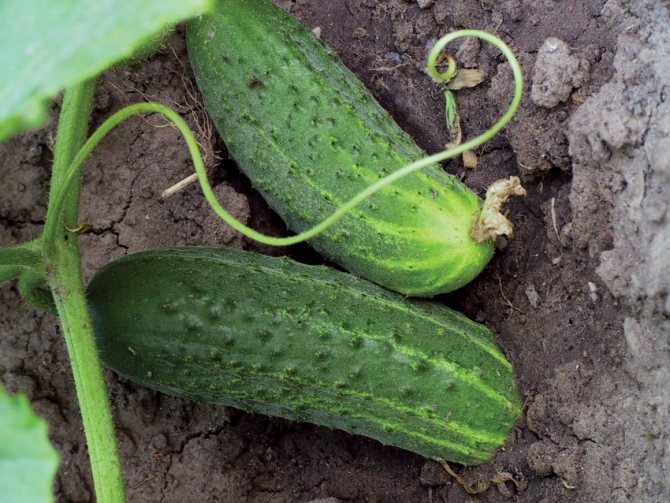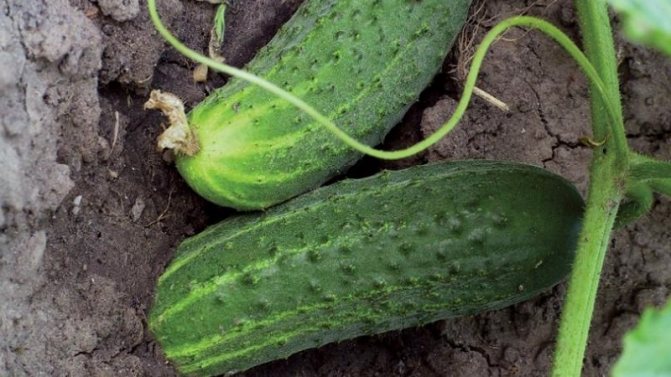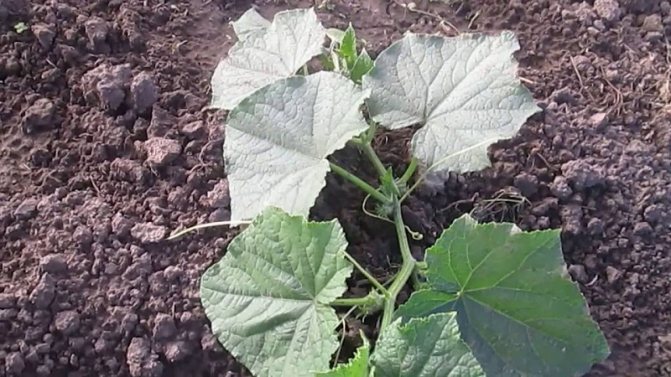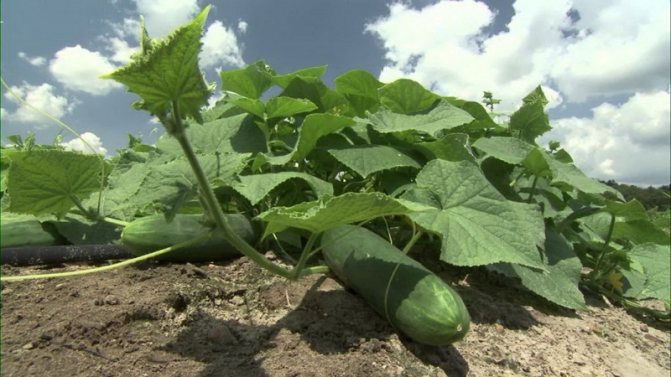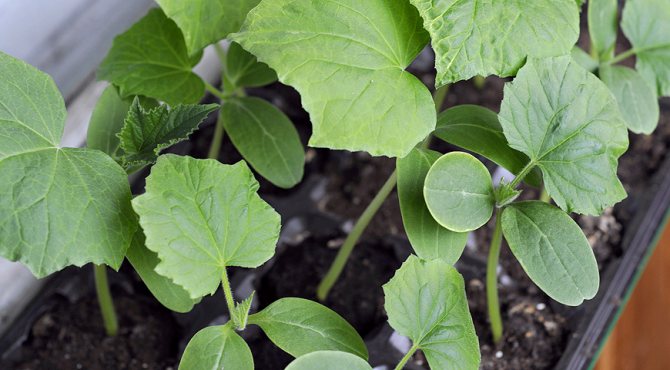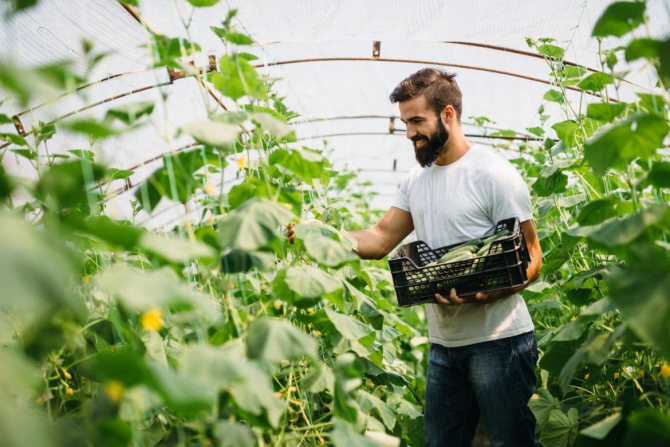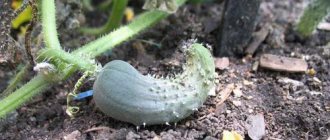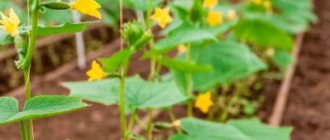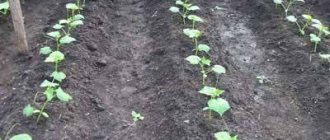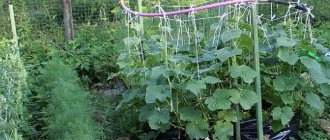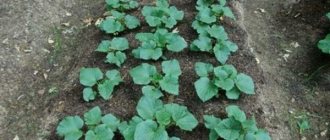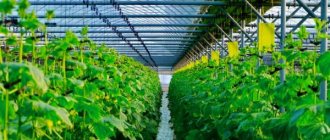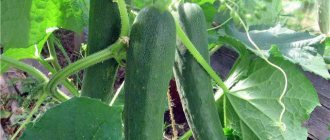Cucumbers are one of the most popular vegetable crops known for their demand for light, heat and nutrients. It doesn't matter how cucumbers grow - in greenhouses or outdoors. If you follow the standard rules of agricultural technology, you can get a rich harvest.
The process of setting and growing cucumbers
Features of growing new cucumber hybrids
All these wisdom, trial and error were necessary when we were dealing with old varieties of cucumbers. With the advent of new hybrids on the market, the situation has changed radically.
The understanding came that the savings on the purchase of seeds does not justify itself. Seeds harvested with their own hands cannot be compared with good planting material purchased from a trusted company. Here you save money, and the sown area, and your own nerves!
The purchased seeds of hybrids have many undeniable advantages. The cucumbers grown from them are mainly of the "female" type of flowering, that is, they practically do not have barren flowers. Among them there are parthenocarpic, that is, self-pollinated. On such plants, each flower is "female", immediately with a cucumber! These are, for example, varieties:
F1 Magnificent Five, F1 Village Fair, F1 Three Comrades, F1 Crunch, F1 Espagnolette, F1 Little Wizard. Many of them are genetically free from bitterness: Temptation F1, Preschoolers F1, Cheerful Gnomes F1, Chipmunk F1, Nathania F1.
Breeders tried to make it easier for gardeners to fight diseases by programming immune resistance in new hybrids.
Petruha F1, Barin F1, Russian nugget F1, Baba Masha F1 are distinguished by very good yield.
Planting 20-30 seeds of one of these hybrids will provide a large family with fresh cucumbers! At the height of the season, I shoot 4 buckets of greens a day from a five-meter garden bed!
Soil preparation for planting seedlings
The best soil for growing cucumbers is considered to have a high moisture content. Loamy soils are best in type.Sandy ones are best avoided, as the plants simply will not have enough water. Cucumbers love warm air and bright sunlight. It is better to plant them in flat areas. On the hills, there will be insufficient moisture, as it will drain into the lowlands, while the lowlands, on the contrary, accumulate too much water, which can lead to decay of the roots.
Also, in the lowlands, the air temperature will be slightly lower, and cucumbers are very fond of warmth. Therefore, it is recommended to plant cucumbers at the end of May.
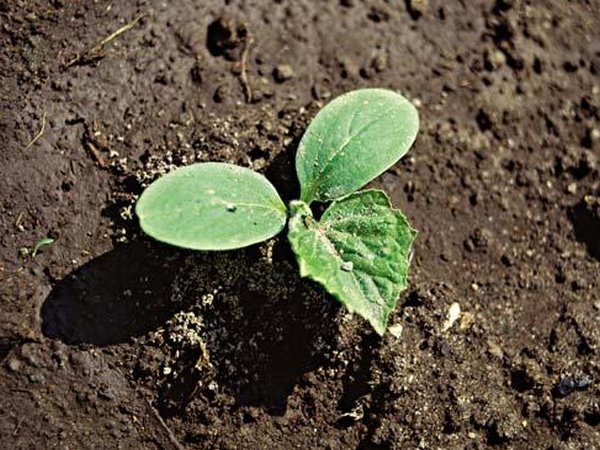
When planting cucumbers, it is best to avoid sandy soils.
How to properly grow cucumbers?
I tried planting cucumbers in different ways: in corn, which serves as their support, and in an open garden. I tied them to a trellis and let them lie on the ground, cultivated in the greenhouse and in the open field.
After many experiments, I nevertheless came to the conclusion that it is better to grow cucumbers on a trellis.
So it is easier to care for them, and ventilate them, and harvest. Just remember that cucumbers are afraid of drafts. This plant comes from the humid Indian jungle, where there is practically no air movement. Protection against drafts in the open field can be corn or beans, also planted on the trellis on the leeward side.
Soil acidity for cucumbers
The acidity of the soil for cucumbers plays an important role in the formation of plants.Only a healthy seedling will give the maximum yield of the highest quality. Failure to meet the requirements for the cultivation of this vegetable plant, an imbalance in the mineral composition and an excess of the value of the soil acidity index will certainly affect the final result. Consider which land is best for growing cucumbers.
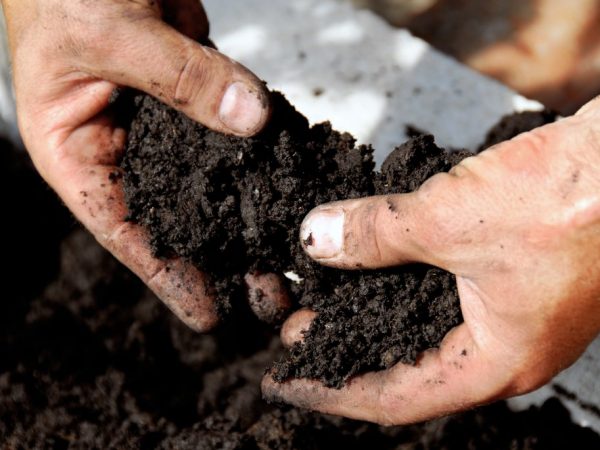

Soil acidity for cucumbers
How to grow seedlings?
I usually plant seeds for seedlings at the end of March. I am preparing the substrate: in a 10-liter bucket I mix garden soil and humus in equal proportions. I add a 2-liter can of coarse washed sand, half a liter of ash, 1 tablespoon of superphosphate. Stir and lay out in peat pots. I sow the seeds dry to a depth of 3-4 cm. I water them, then insert the peat pots into half-liter plastic cups. I cover them with foil and place them in a warm place. After a week, sprouts appear.
How to prepare a cucumber garden?
I usually prepare a garden for cucumbers in the fall. I choose the ground to a depth of 40 cm. At the bottom of the trench I lay out mown lawn grass with a layer of 10 cm. When decomposing, it will warm up the cucumber bed in the spring and help me get an early harvest. I put a fertile substrate on the grass and forget about it until next season. In the spring, so that the earth thaws faster, I cover the garden bed with black non-woven material.
I plant cucumber seedlings in early May, when they reach 35-40 days.
I spill the earth with hot water with a growth stimulator and plant seedlings. To protect delicate cucumbers from frost, I am building a tunnel of arcs over them. For a garden bed 5 m long, 11 pieces will be needed, one every half a meter. I cover the arcs with white non-woven fabric in several layers. I press it against the arcs with boards so that it doesn't get blown away by the wind. With such a planting, a harvest of fresh cucumbers is guaranteed to you already in June!
What to do if crocheted cucumbers?
Why do cucumbers crochet? Because the rules of agricultural technology have been violated.
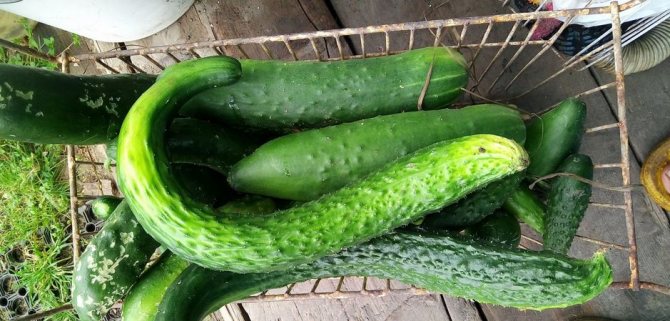

Since how to grow good cucumbers, if hooked cucumbers began to appear en masse on the lash during harvesting:
- Don't ignore crop rotation rules. It is necessary to carefully consider what was growing in the cucumber garden before sowing the cucumbers. The fruit will bend if the predecessor was a crop with similar micronutrient intake. The absence of trace elements in the ground cannot be replenished with top dressing.
- Never plant pollinated and parthenocarpic plant types nearby.
- In order for the cucumbers to grow in the correct shape and not bend, it is necessary to apply potash fertilizers and wood ash under each bush.
- Water the cucumber bushes only with heated water above 15 C. To prevent the cucumbers from curving with weak watering, you need to spud the bushes to retain moisture.
- It is important to maintain the water balance of the soil in the beds, for this it is good to mulch with rotted leaves, straw or peat.
- To avoid jumps in temperature at the end of the season, cover the plant with a film or make warm beds, heating pads.
- If the cucumbers are crooked because it is not possible to harvest regularly, and the load on the bush is high with insufficient moisture, then it is better to cut off the greens 5-8 cm long in advance in order to release the whip.
Now you know why cucumbers are crooked!
How to water cucumbers correctly?
Watering is not so simple. The roots of cucumbers are very tender, so they are afraid of cold water. But too warm water can harm them. When do we usually water the beds? Of course, in the evening, when the earth was almost white-hot in the sun for the whole day! What kind of water? Surely the one who basked in buckets and watering cans in the sun all day. Therefore, when watering the heated ground with heated water, almost the effect of boiling water is obtained!
Have pity on your cucumbers and it is better to water the beds in the early morning.
It is worth talking about irrigation water especially.If it is possible to collect it from a river or lake, this is just ideal.
It also contains less salts than the well, and the temperature is right. The best water for irrigation is +18 - +20 ° С. But if there is no reservoir, collect water for watering cucumbers in containers in the evening so that the temperature of the water and air will equalize. In this case, the delicate roots of the plants will not experience stress.
If it's cold outside, you can leave the water for irrigation indoors. You need to water the cucumbers abundantly, under each bush, in order to thoroughly wet the ground. And then it is good to mulch the garden from above.
How to determine the acidity of the soil
There are several ways to determine the acidity of the soil. To determine the quality indicator of pH at home, the following indicators are most often used:
- Litmus paper, which is an indicator for alkalis and acids. The principle of obtaining the results lies in the fact that a piece of paper with a reagent applied to it is immersed in water with soil for 3 seconds, and then the result is assessed according to the appropriate scale.
- Table vinegar. This substance can be poured over dry soil taken from the garden. If no reaction occurs, it means that the material is acidified. If weak bubbles appear on the surface, then this indicates that the earth is slightly acidic. Alkaline soil will show itself as a standard neutralization reaction.
You can also estimate the pH level using:
- Klychnikov's method, which is an analysis of the behavior of soil when interacting with ordinary chalk. This method makes it possible, without complicated manipulations, to make sure that the earth has a low pH value, that is, it is acidic or slightly acidic.
- Alamovsky's method. To carry out the analysis, the gardener will need to acquire an electronic device that can determine the desired indicator in a short time. The analysis can also be performed in a laboratory specializing in agricultural research. The procedure lasts only a minute, after which the result will appear on the scoreboard with a minimum error.
In the event that it is not possible to use the services of specialists, to purchase a dosimeter device or to carry out other studies with the help of improvised and chemical means, you can resort to the observation method.
Cucumbers will feel great where they grow:
In the wet beds in early spring, you can also see coltsfoot and bird highlander. Beets are a good indicator of slightly acidic soil on the site. In this case, the tops of the root crop will be green with clear red veins.
If the soil is acidic, then it will produce excellent quality sorrel, and the tops of growing beets will be painted in a deep burgundy color. Lush bushes of plantain, cinquefoil and horsetail can also be seen on such land. The soil, the acidity index of which exceeds the mark of 4 units, has a rusty tint, and also crumbles in the hands.
How to extend the fruiting period of a cucumber vine?
If flowers and new ovaries have ceased to appear on your cucumber vine, it means that the plant has exhausted all its strength and can no longer bear fruit. To get a new crop from a plant, it is necessary to carry out "resuscitation" measures.
First you need to feed it in a special way. For this, I prepare a fertilizer from fish heads. I fill them with water in the following proportion: a pound of fish waste per 1 liter of water. I insist 3 days. As soon as the foam appears, the infusion is ready. I add a glass of ash to it, mix well and water the soil around the stem with the solution. Then I remove all the foliage from the creeper, leaving only the top with growth points with the leaves. I fold the vine in a spiral and fix it on the ground with hairpins near the growth points. It is from them that new shoots will soon appear.You will need to choose the strongest one - it will become the main plant, the rest will be removed. The cucumber vine will develop quickly, and soon cucumbers will appear on it again.
This is how you can make even an old plant bear fruit again!
We buy soil
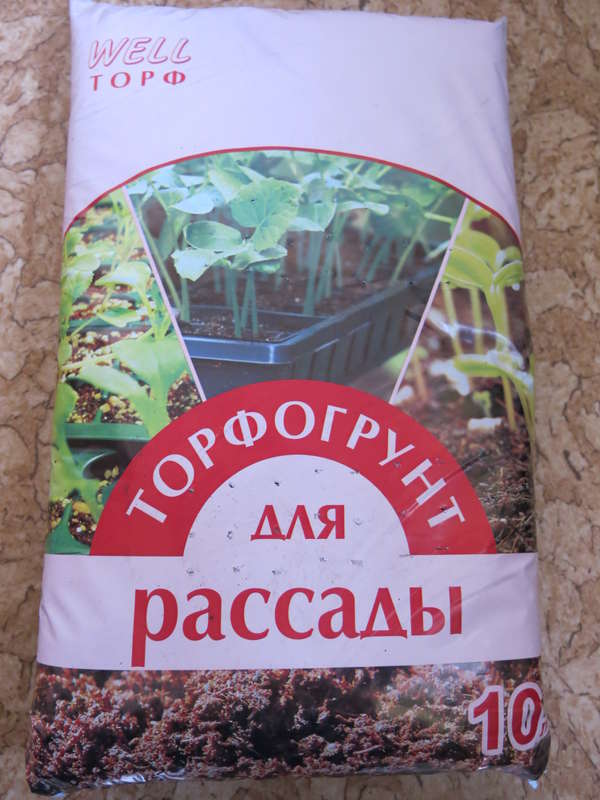

Shop ready soil for seedlings
Consider a few useful tips from experienced summer residents, what you need to know when buying store-bought soil for cucumber seedlings:
- In stores, the soil is universal and special, for various crops. Experienced vegetable growers buy special soil, since active fertilizers must be additionally added to the universal one.
- Be sure to buy packaging with a label that indicates the manufacturer and his address, the composition of the soil itself and its batch number, as well as the production and expiration dates. Also on the label there is useful information, for example: the acidity of the soil is indicated.
- Read the composition of the soil well, ideally it should be a couple of types of peat, sand or vermiculite, as well as montmorillonite alumina. If the composition per liter of the mixture contains 300 milligrams of potassium, nitrogen and phosphorus, then this mixture is used as a separate component of the main mixture.
- If you are buying soil for the first time, then take one small packet of different mixtures per sample. In the future, the soil you like can be purchased in bulk in large quantities. The main thing is that it is porous, loose and keeps moisture well.
- At home, the land must be sorted out, since debris and larvae may also be present in it. Then it is disinfected for prophylaxis, but this must be done in advance, since the beneficial microflora also dies with diseases.
Types of store soil


There are a lot of varieties of store soil
Ready-made store-bought primer, it is convenient and does not take much time. But not all of them are used in their pure form: some are ready immediately for planting, others need to be fertilized, and still others are used as an additive to the main mixture.
Let's consider the most popular ones:
- Living land. This soil can be used both immediately for planting and instead of fertilization. It can be of several types: universal, special No. 1 - slightly acidic, special No. 2 - neutral and floral. For cucumbers, special No. 2 is suitable.
- Mother Earth. This soil is almost ready for planting, but it is not loose enough for cucumbers, so semi-rotted sawdust is added to it about twenty percent of the amount of the mixture or Agrovermiculite.
- Humimax. It is ready to plant and has already been sterilized. Such soil consists of peat, river sand, mineral fertilizers, manure compost and Gumimax fertilizer, which contains potassium humate, a biologically active component.
- Microsteam. Such soil is considered neutral and with the addition of sand or sawdust and steamed soil, various vegetable crops can be grown in it. If you add sawdust, you should pour boiling water over them and mix with ash.
- Soil for cucumbers. This is a ready-made soil for planting cucumber seeds. It is based on peat, diluted with all the necessary elements for nutrition and rapid growth of cucumber seedlings and a good harvest.
- Biud-soils. These are organomineral soils that are prepared using a special technology. They are ready for landing. They are of different types: for nightshades, for conifers, for garden flowers, for indoor flowers, for vegetables and for pumpkin crops.
- Universal. This type of soil consists of peat and semi-rotten sawdust, and before planting it should be additionally enriched with mineral fertilizers. You can add twenty percent of the entire mixture, Piksa or vermicompost.
- Biohumus. It is an additive with the basic soil mixture, consisting of lying sawdust, aerated peat, bird droppings and manure processed by worms. Most often it is added in the amount of twenty percent of the total mixture.
It makes no sense to list all varieties of soil ready for planting and additives to the soil mixture.Any neighbor who is a summer resident will advise you which soil is better. And also sales consultants will tell you what to take for a sample.
Peat tablets
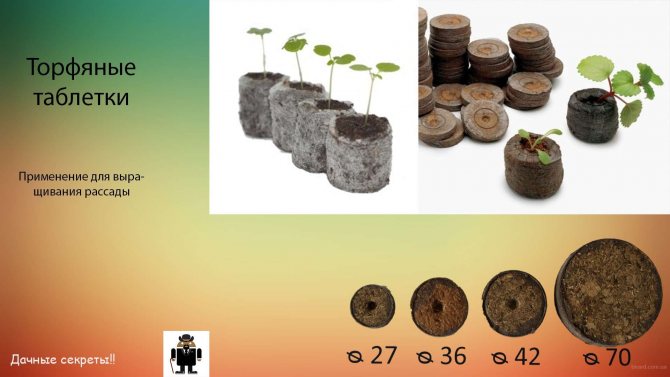

Peat tablets for growing seedlings
Peat tablets are a relatively recent invention and their cost is several times more than soil in bags, but gardeners appreciated their convenience. They are easy to use, it is unnecessary to disinfect them and it is convenient to transplant grown seedlings.
Such tablets are composed of compressed peat or coconut fiber, which have equivalent properties. They are packed in a paper casing or natural netting, which are impregnated with special agents against diseases and pests.
Advice! You should not buy peat tablets without a shell, since swollen, it will not be a container, but a handful of wet peat.
The tablets come in a variety of sizes and are purchased based on the size of your plant's seed. They also have different acidity, which is usually indicated on the packaging with pills, so when buying pills, carefully study the label.
Peat cups
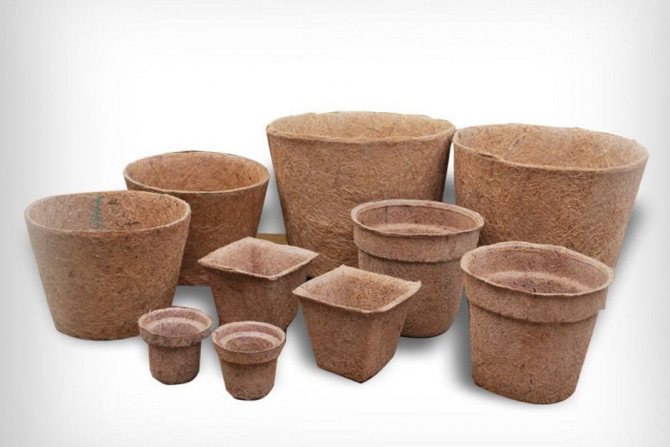

A variety of peat cups for seedlings
Peat cups are more popular than peat tablets, as they are even more convenient. Most often they are used when picking seedlings. They are good because they are created from environmentally friendly natural materials and decompose well in the ground, leaving no traces.
Their advantages include their durability and environmental friendliness. They are porous, allowing air and moisture to penetrate easily. This advantage allows the roots to breathe well and not sour. Transplant to a permanent place, carried out together with a glass, so the roots remain safe and sound.
But peat cups also have disadvantages, this applies to their cheap varieties. Due to the low price, their quality also suffers, they get wet and can become infected with mold. All types of peat cups have a problem of rapid water absorption, so they need to be watered more often.
Seed preparation
The highest germination and productivity are seeds, the age of which is 2-3 years. They begin to prepare for planting 10 days before that. To do this, the grains are dipped in warm, slightly salted water. Stir, throw out all floating specimens. The rest are transferred to a pale pink solution of potassium permanganate for 15 minutes. After that, the seeds are poured onto a plate, the bottom of which is lined with wet gauze, folded in several layers. Cover with the same gauze, and then germinate.
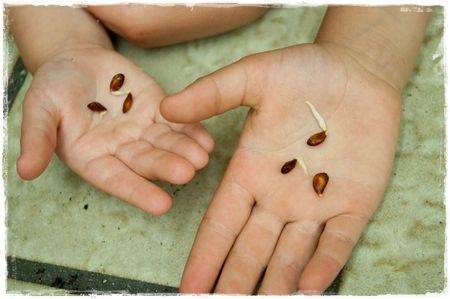

When the roots appear, the planting material is placed in the warmest part of the refrigerator for 5 days. Make sure that the gauze does not dry out. Of course, the seeds can not be germinated, but sown dry. But then the ripening of the crop will drag on for 15-20 days.
Increased acidity
In order to increase the acidity of the soil, you can use the method of planting useful predecessors. Capable of acidifying the soil:
- potatoes;
- cruciferous: mustard and rapeseed;
- legumes: clover, alfalfa;
- cereals: rye and barley.
The simplest green manures are sown before winter, and dug up in the spring. Such an action will not only help return the necessary qualities to the earth, but also fertilize the site.
You can also increase the acidity of the soil with oxalic or citric acid. For 10 liters of liquid, you will need to add 60 g of the substance. The consumption rate of means for fighting a neutral or alkaline environment on the site is 10 liters per 1 sq. M.
You can also acidify the soil with a mixture of sulfur and peat. In order to process a square of soil, you will need 1.5 kg of peat and 100 g of sulfur. The best time to apply the product is late autumn. If there is no sulfur, then you can use pure peat, but then its amount should be increased to 3 kg.
Planting seeds
Cucumbers are grown in garden beds where onions, garlic, cabbage, or legumes were grown last year.
When it gets warm outside, in the beds, with the help of a glanders, furrows are made with a depth of 2-3 cm. The distance between adjacent grooves should be about 40 cm. Seeds are carefully lowered into the resulting grooves, trying not to damage the roots. Place 2 seeds every 20 cm. Water them, sprinkle them with earth and tamp them. To protect against acid rain, pegs with a height of 30 cm are driven in along the edges of the beds and white agrofibre is pulled over them.
Seeds should not be planted in open ground earlier than the second half of May. After landing, the thermometer should not drop below 15 degrees, even at night. To protect plants from the north wind, it is better to plant cucumbers from the south of buildings and fences. If this is not possible, corn is planted along the northern edge of the beds, which will protect the planting from the cold wind.
Which varieties to choose
The varieties of cucumbers that can be grown in the country in the open field are not quite suitable for growing in a greenhouse. Breeders take into account more than a dozen parameters when breeding new varieties, so they are radically different. The difference lies in the growing regions, microclimate, soil type, climatic characteristics, etc.
For greenhouse
Greenhouse cucumbers can be divided into four categories according to their ripening time: super early, early, mid and late.
Learn more about how to properly grow cucumbers in a greenhouse, and how to water cucumbers in a greenhouse correctly and often.
Below is a list of suitable greenhouse cucumbers, grouped by maturity:
- Super early - Bettina, Capricorn, Aristocrat, Vocal. All of them are universal, resistant to many diseases, are distinguished by increased or normal yield and good taste.
- Early - Goosebumps, Dynamite, Emelya, Mother-in-law. The length of the fruits of all representatives, except for Emelya, reaches 12 cm. Emelya differ in lengths up to 15 cm, therefore it gained fame as a salad variety of cucumber. Early varieties ripen 40–45 days after planting and are distinguished by a large amount of yield per square meter of planting.
- Mid-season - Annushka, Sunny, Wisconsin, Rodnichok, Raphael. It will take about 50 days for these representatives of the pumpkin family to ripen. Only Raphael is radically different from his fellows, the length of the fruits of which reaches 25 cm, which is almost twice the length of the fruits of other mid-season varieties.
- Late ripening - Nezhensky, Khrust, Obskoy. Fruits after ripening remain small, approximately 8-10 cm in length and weighing no more than 100 g. Late-ripening varieties are well suited for long-term storage and conservation.
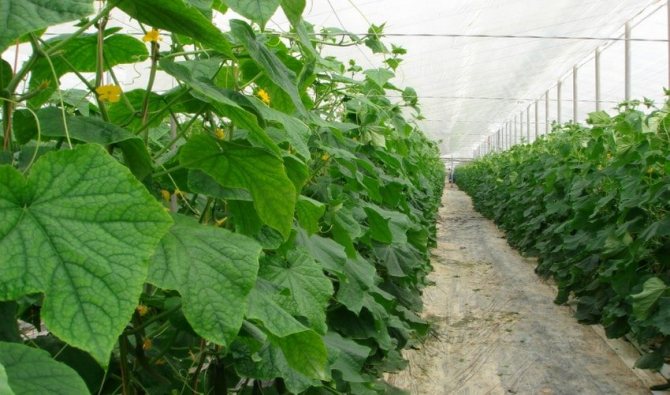

For open ground
Varieties for open ground are conventionally divided into two large groups: self-pollinated and bee-pollinated. The main difference that you need to know is that the fruits of bee-pollinated varieties are tastier, they are more aromatic. Those that are pollinated without the participation of bees, give a large yield, are unpretentious to weather conditions and are resistant to many diseases.
Did you know? Cucumber is more than 95% water. That is why this garden crop needs frequent watering for good yields.
The most popular bee-pollinated varieties are: Faithful friends F1, Lord F1, Farmer F1, Nezhinsky F1. The first variety produces small, crunchy fruits with small, barely noticeable white stripes. Loyal friends F1 is resistant to many diseases and pests, matures in about 40 days and is well suited for salting.
The rest of the varieties are also resistant to adverse weather conditions and are characterized by the absence of bitterness. Nezhinsky F1 is a late cucumber, but many people like its extraordinary taste.
Among the self-pollinating varieties in our country, Claudia F1, Ant F1, Zozulya F1 are very popular. The first variety is late ripening, the other two are early ripening, so they are better suited for fresh consumption or for making salads.
Secrets of the formation of bushes
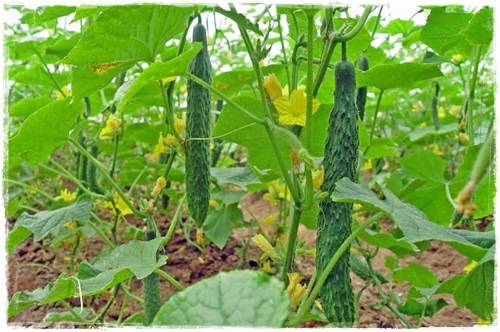

- For the formation of a powerful root system during the first month of plant development, all lateral stems that grow from the bases of the first four leaves are removed from them.
- If only male flowers appear on the bushes (a female flower has a small cucumber or the like) that are unable to bear fruit, half of them are cut off, after which the plants are not watered for 7-9 days. This stimulates the tying of female flowers.
- Old varieties of cucumbers have a cultivation feature associated with the fact that only male flowers grow on their main stem. When the central stem extends up to thirty centimeters in length, it is pinched, initiating the growth of lateral shoots with mother flowers.
Required care
For watering cucumbers, use only warm water, settled for a day. Plants are watered abundantly every 3-4 days, in the evening.
Garlic tops and onion arrows are placed in the aisles to prevent the appearance of fungal diseases. In addition, the tops are a good mulch. It slows down the evaporation of moisture and the growth of weeds.
Cucumber plants are fed in three stages.
- The first feeding with nitrogen fertilizers is needed when the plants stretch up to 10-15 cm. In 10 liters of water, 2 tbsp is diluted. spoons of ammophos. In addition to nitrogen, it contains phosphorus, which enhances root development. Application rate: 1 liter of the resulting solution under the bush.
- The second time the cucumbers are fertilized when they bloom. During this period, plants need potassium and phosphorus. 30 g of potassium sulfate and superphosphate are dissolved in 10 l of water. The plants are fertilized the next day after watering so as not to harm the roots. After a week, ash can be scattered under the bushes (handfuls per 1 square meter of the garden). Foliar feeding is also useful. Dissolve 20 g of urea in a bucket of water and spray the leaves after sunset, in dry weather. Additional fertilizing with potash fertilizers will prevent the fruits from curling and becoming bitter, so they should not be neglected.
- During the period of mass fruiting, plants are fertilized with such an infusion. In a liter of very hot water, dissolve 30 g of superphosphate, add 9 liters of cool water, 1.5 tbsp. tablespoons of ash and a tablespoon of yeast (not dry). After a day, you can water the soil with infusion.
To ensure that fruiting does not slow down, the crop must be harvested regularly, twice a week. After collecting it, new ovaries will appear, and the existing small cucumbers will begin to develop at an accelerated pace.
Conditions for a perfect harvest
To make the dream of an ideal bountiful harvest of cucumbers come true, you need to master the difficult secrets of the cucumber business. If you miss at least one of them, then you can not only lose a high yield, but also completely destroy the plants. It is necessary to please the cucumber! Allocate additional time for care, and competently follow all the rules of agricultural technology. How to grow cucumbers correctly?
Heat
Thermophilicity is a fundamental factor, because the cucumber is a native of India. The culture is hypersensitive to lack of heat.
When cucumbers are sown in open ground, there may still be frosts at night, and it can get very cold during the day. From a sharp change in weather, seeds can rot or rot.
The intense heat is also not comfortable for this vegetable. For better growth, the ideal thermometer indicator is from +23 to + 27 ° С
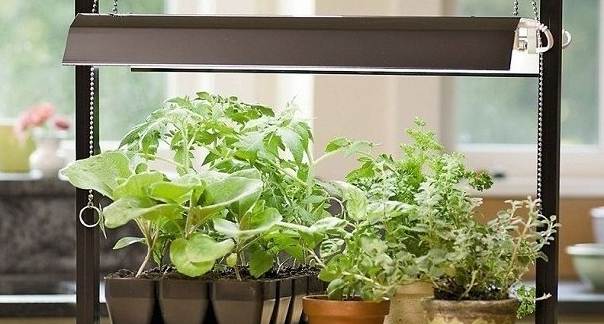

Water
Cucumbers constantly need water for growth and development.
For a high yield, special conditions for watering the plant are required:
- Watering mode. If there is not enough moisture, then the leaves darken, become brittle, the ovary falls off, growth is delayed, the taste of greenery deteriorates. But excess water harms the plant: it reduces the air capacity in the root system, the leaves turn pale, the lashes slow down the growth and formation of fruits. Susceptibility to disease increases. Jumps in hydration cause the fruit to become bitter.
- Watering temperature. Cucumber is a thermophilic plant.Its roots grow shallow in the ground, absorb water well only when the soil is warm. And, therefore, watering should be done only with heated water (from +18 to + 25 ° C). If the weather is cold, the water temperature can be increased noticeably.
- Watering time. It is more favorable to water cucumbers in the evening, but it is possible at certain hours in the morning, when the sun has not yet risen high.
- Watering methods. Pour water not with a jet from a hose, but from a watering can into the holes between the rows, so that it does not wet the leaves, but falls strictly under the bush. It is ideal to use drip irrigation, sprinkling.
- Regularity of hydration. Watering should be done regularly so that the soil does not dry out. This is the key to success for growing an excellent harvest of cucumbers. In hot weather, the plant should be watered daily. This is not required in rainy weather.
- Watering rates. Before the start of flowering cucumbers and the appearance of greens, water should be moderately, once every 4-6 days, 4-5 liters of water per 1 sq. m. During the period of flower setting and mass fruiting, it is watered often and abundantly.
- Increase the water consumption to 10-12 liters, watered every other day.
- Optimally, if the moisture content of the soil for the plant is at the level of 80%, if it is below 35%, the bushes will wilt.
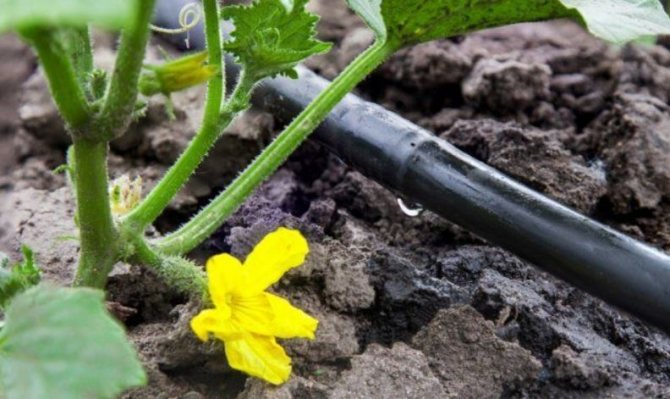

Lighting
An important condition for the growth of cucumbers is moderate illumination. If there is not enough light, then growth slows down and the plant does not develop. But, it is also very unfavorable for the plant if the cucumber lashes are illuminated around the clock by the scorching sun.
- They need a short period of photosynthesis.
- The optimal daylight hours for them are from 10 to 12 hours.
- June and August days are ideal for abundant fruit ripening.
If there is no good lighting, the summers are rainy and the nights are warm, a large number of masculine colors are formed.
The soil
A professional gardener will be able to grow cucumbers on almost any land if you organize good air permeability, sufficient aeration of the soil, and its drainage in the beds.
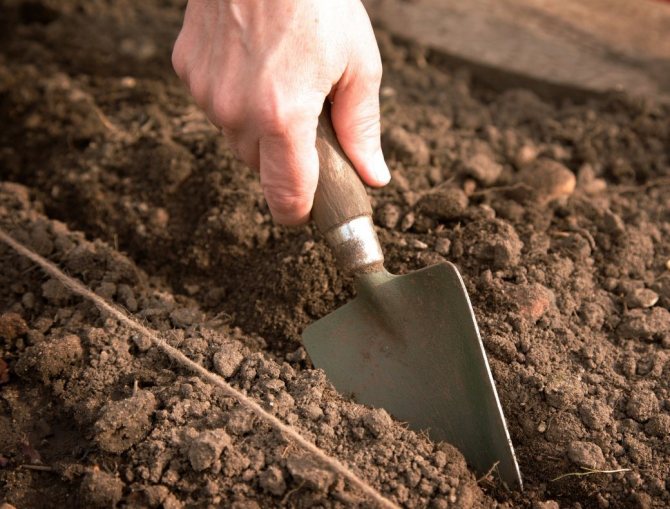

But very heavy soils are not suitable for the plant, or if groundwater lies near the beds. Cucumbers are vegetable crops with a root system close to the surface of the earth, and therefore structured soil is suitable for them. So that the roots of the plant have good access to oxygen and moisture.
It is better to grow a vegetable on light neutral soils, where a lot of humus is introduced, with a pH in the range of 6.5-7.0.
Fertilizers
The next necessary condition for obtaining an excellent harvest is competent and regular feeding of the plant:
- Site preparation. The growing bed must be prepared in advance so that it is enriched with a sufficient amount of trace elements. The best predecessor of the cucumber crop is well-rotted cow dung.
- How to feed... For feeding cucumbers, any organic matter, rotten hay, ash will do. Chicken droppings, fresh manure diluted with water, in a ratio of one to five, can be applied directly under the bush. It is necessary to combine all types of fertilizers, mineral and organic. Cucumbers are most responsive to nitrogen. But they also need other trace elements: potassium, phosphorus.
- Feeding mode. With the appearance of the first two or three leaves on the bushes, regular feeding of the plant grown in an open bed begins. It continues throughout the entire period of fruiting. During this period, feeding must be carried out at least 4 times. When mass fruiting occurs, the dose of fertilization can be increased.
- Everything is good in moderation. Top dressing doses should be moderate. If we add settled chicken manure, fresh manure, then they should be diluted with ten parts of water. Add a liter or one and a half of the resulting solution under the bush. In the hot season, the frequency of feeding increases.
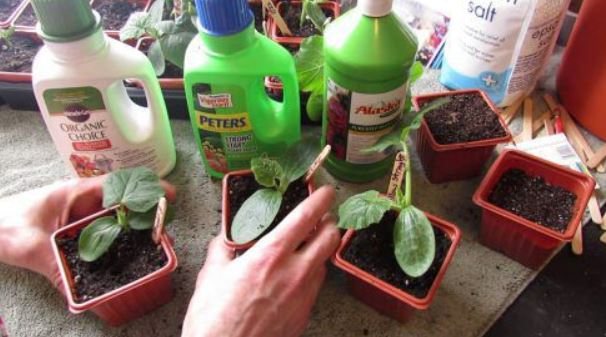

An excess of nitrogen and a lack of potassium and phosphorus lead to the fact that the ovaries fall off. When the fruits appear, the plant itself will tell you whether it needs additional trace elements.
Crop rotation
If you break the beds for cucumbers in the same place for many years in a row, then the plant will hurt, and the yield will noticeably decrease. It is recommended to change location annually. Do not return to your previous place earlier than five years later.
The ideal precursors to cucumber are crops:
- radishes and peppers, early cabbage.
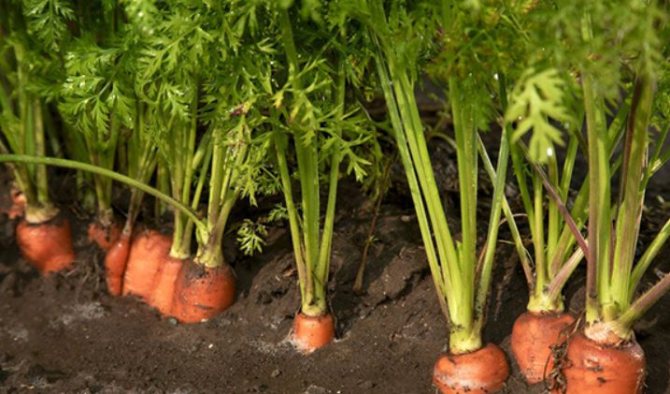

Vegetables react quite tolerably to early potatoes, onions and corn. But, if pumpkin, zucchini or beans grew in the garden in front of him, then the likelihood of infection with similar diseases is high.
Description of the growth of the cucumber
Cucumbers are very demanding plants for sunlight, cloudy weather and lack of light in the greenhouse leads to their poor growth: delayed flowering and fruiting. The abundance of light during the day is especially important for good seedling growth. Cucumbers love short bright days and long dark nights, and this balance of the day ensures good plant growth. When growing seedlings, we recommend giving complete darkness for 12-14 hours and good lighting for 6-8 hours, as a result, female flowers will appear early and you will get an early harvest of cucumbers.
Cucumbers grow well in high humidity. In the greenhouse, the air humidity is maintained at 80-90% and the cucumber is rarely watered before fruiting. In the open field, in the heat, plants are sprayed with water so that water does not fall on the leaves, otherwise they will dry out.
Cucumbers grow well in non-acidic soils. The best soil acidity for their growth is pH 6.5. Cucumbers grow well if liming of the soil is carried out regularly.
Description of the conditions for good growth. We recommend pinching the cucumbers over the fourth - fifth leaf, but so as not to damage the apical bud, for the early appearance of lateral shoots, and on them female flowers. After flowering is complete, the growth of the main stem resumes.
Low temperatures at night promote the formation of female flowers due to a decrease in plant respiration and carbohydrate consumption. At temperatures below 15 ° C, cucumbers can bloom, but they do not form ovaries. When it gets cold, they grow poorly and may die.
The ovary is formed after pollination of the cucumber flower by bees. If there is no natural pollination, then it is done manually. To do this, they pluck a male flower (it is without an ovary) and cut off its petals, put a male flower in a female one (with an ovary), or take pollen from a male flower with a brush and apply it on the stigma of a female flower.
Let us now tell you how the fruits of a cucumber grow. They grow mainly in the dark, when the decomposition of complex organic substances and the outflow of decay products mainly into the fruits. Therefore, during the fruiting period of cucumbers, a decrease in temperature at night is permissible only up to 20 ° C, otherwise the harvest will be small and the plants are easier to get sick with powdery mildew. In the afternoon during this period, the most favorable temperature is 28-32 ° С. At higher temperatures, the ovary stops. Overheating of plants causes their depletion.
Common mistakes
Cucumbers require ample amounts of heat, light, air, nutrients and water. The lack of any of these components can seriously harm the crop and lead to reduced yields.
The reasons for the loss of yield are the following errors of agricultural technology:
- Failure to comply with the rules of crop rotation. The best precursors for cucumbers are cauliflower, onions, garlic, legumes, and corn. You should not plant cucumbers in the place of the previous sowing, as well as after white cabbage, tomatoes, carrots, turnips, peppers and eggplants.
- Sowing seeds in open ground in early May. When sowing, it is always necessary to focus only on the weather conditions; the soil must warm up for at least two weeks. Sowing in cold soil can lead to rotting of the seed.
- Planting overgrown seedlings (over 20-35 days).The older the seedling, the worse it will take root in the new conditions and the easier it will be to damage its root system during transplantation.
- Too tight fit (thickening). Plants in such conditions experience a lack of light and air, which leads to their weakening and an increase in the chances of developing diseases.
- Refusal to apply fertilizers. The ideal feeding regime is one serving per week (you can use complex mineral fertilizers, paying special attention to the presence of nitrogen and potassium).
- Rare collection of fruits. The yield of the culture directly depends on the frequency of collection of greens, even a few overgrown fruits can delay the formation of new ovaries on the entire plant.
Cucumber characteristic
How cucumbers grow. Cucumbers are characterized by demanding heat, have a short growing season and therefore grow in short summer conditions. In the open field, without additional care in the Moscow region, a good harvest of cucumbers is obtained only in hot summers with light warm rains in July - early August. How to grow early cucumbers. Early cucumbers grow when they are grown through seedlings, which are planted under temporary shelters with covering material or film or in a greenhouse.
Characteristics of a cucumber: cucumbers contain up to 97% water, a small amount of proteins and carbohydrates. There is no fat in cucumbers. They make it easier for the body to assimilate protein foods. They are dominated by alkaline salts that dissolve uric acid. Regular consumption of cucumbers prevents rheumatic diseases, heart and kidney diseases.
Cucumber seeds germinate at a temperature of 12-13 ° C. We recommend tempering swollen seeds at low temperatures, which promotes seed germination even at 12 ° C. Sprouted seeds should not be sown in unheated soil (below 10 ° C). They sprout two weeks after the soil temperature reaches 15 ° C. If the ground is warmer, seedlings appear earlier, after six to eight days. The best temperature for seed germination and for the growth and development of cucumber: soil temperature 23-25 ° C and air temperature 25-30 ° C day and night 16-18 ° C.
We recommend sorting cucumber seeds in a 3% sodium chloride solution (a teaspoon of salt in a glass of water). Sunken seeds are left for planting.
What to do if cucumbers don't grow
If the cucumbers are stunted, sick, or produce little fruit, these tips will help you:
- It is necessary to maintain a crop rotation: do not sow cucumbers in the same place earlier than 4 years later, be sure to alternate different crops.
- Do not plant cucumbers too thickly. Densely spaced plants slow down growth and are more susceptible to disease.
- Prevent disease. Do not wait for the plants to get sick en masse, and all the leaves will suddenly turn yellow or spotted. Preventive spraying must be carried out.
- The first spraying is carried out on the first adult leaves, two weeks later again, and the third is already on the eve of the appearance of flowers.
- Do not water the plants with cold water in order not to harm the growth and not to reduce the ovary of female flowers.
- We do not allow excess moisture, so as not to provoke the formation of barren flowers and the development of fungal diseases.
- We keep cucumber beds free from weeds and plant debris.
- Mulch the beds. Mulch will retain water and reduce the need for watering, protect cucumbers from temperature extremes, saturate the soil with oxygen, and help worms and other beneficial soil microorganisms multiply.
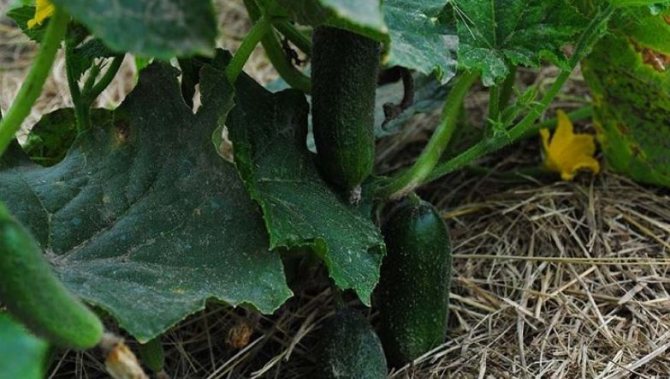

- Spud competently. It is necessary not only to add soil, but to create conditions for water to flow to the roots. As a result of hilling, lateral roots grow additionally, and the more powerful the roots, the faster the cucumbers are tied. Also, the resistance of cucumbers to gusts of wind increases, which is favorable for maintaining moisture in the soil. At the same time, the cucumbers will not get wet.
- Feed and balance in a timely manner.A complete rejection of chemicals often leads to loss of crops.
- The shape and color of the fruit will tell you what the plant needs.
- If there is a lack of nitrogen, the fruit will be narrowed at the top with a light skin, if potassium - the fruit will be narrowed at the stalk.
- Loosen the soil correctly: shallow, without injuring the roots of the bush.
- Strengthen the roots by forming new adventitious roots. To do this, press the lash with the previously removed ovaries (the ovaries are partially removed) to the ground and sprinkle with wet soil.
- Use bees to pollinate. There are several methods for luring insects: pouring sweet syrup into special drinkers, planting melliferous plants.
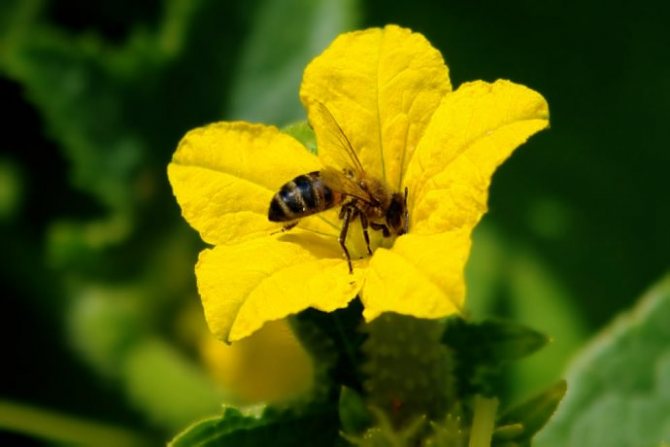

- Tie up cucumbers. If the lashes spread along the ground, they can be damaged, many diseases arise.
- Do not remove barren flowers. If you cut off barren flowers on your own, then the pollination rate of cucumbers will decrease. Unnecessary ovaries turn yellow and fall off on their own.
- Collect fruits in time to grow to normal standard sizes. When it is time for active fruiting, cucumbers need to be harvested daily. Otherwise, they will outgrow, and will interfere with the formation of new ones.
- Also, periodically, all low-quality fruits should be removed from the lash: curves in shape and damaged.
- In cold summers, arrange warm beds. Straw, organic matter is suitable for her. You can build heating pads from plastic hot water bottles and spread them along the bed overnight to warm the plant.
An interesting method to get the plant to form many new greens is to stop watering for a while on the eve of the formation of flowers. Plants, fearing to die, will begin to actively form ovaries.

